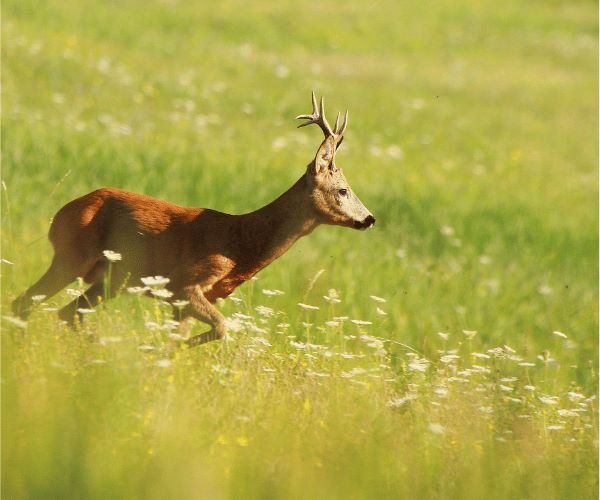Madhya Pradesh
About Madhya Pradesh
Madhya Pradesh got its name because of its geographical position, being located in the centre of India. However, it’s tagline ‘The Heart of Incredible India’ has more to do with the fact that it houses facets of the whole of India into this state. From the historical monuments to modern amenities, culture, food and people- this state gives a taste of entire India packed within its geographical boundaries.
Madhya Pradesh is one of the few states that is surrounded by other states on all its sides. It lies in the plain regions of the country and occupies one of the oldest parts of the Indian Subcontinent which was once the land of the Gonds called the Gondwana. Every twelve years the grand fair of Kumbh Mela is organised here. Madhya Pradesh has some spectacular historical places in its region, of which a temple made of glass in Indore is quite famous. Ujjain, a sacred city for the Hindus, is a renowned place in the world as it is one of 12 Jyotirlingas in India. Madhya Pradesh is particularly famous for its Khajuraho temples which exhibit the erotic sculptures depicting the ancient India Kama Sutra text. The great Sanchi Stupa constructed during King Ashoka’s reign is situated here in Bhopal. The Bandhavgarh National Park which houses the Barasingha and the Tigers reserve is also located here.
Gwalior
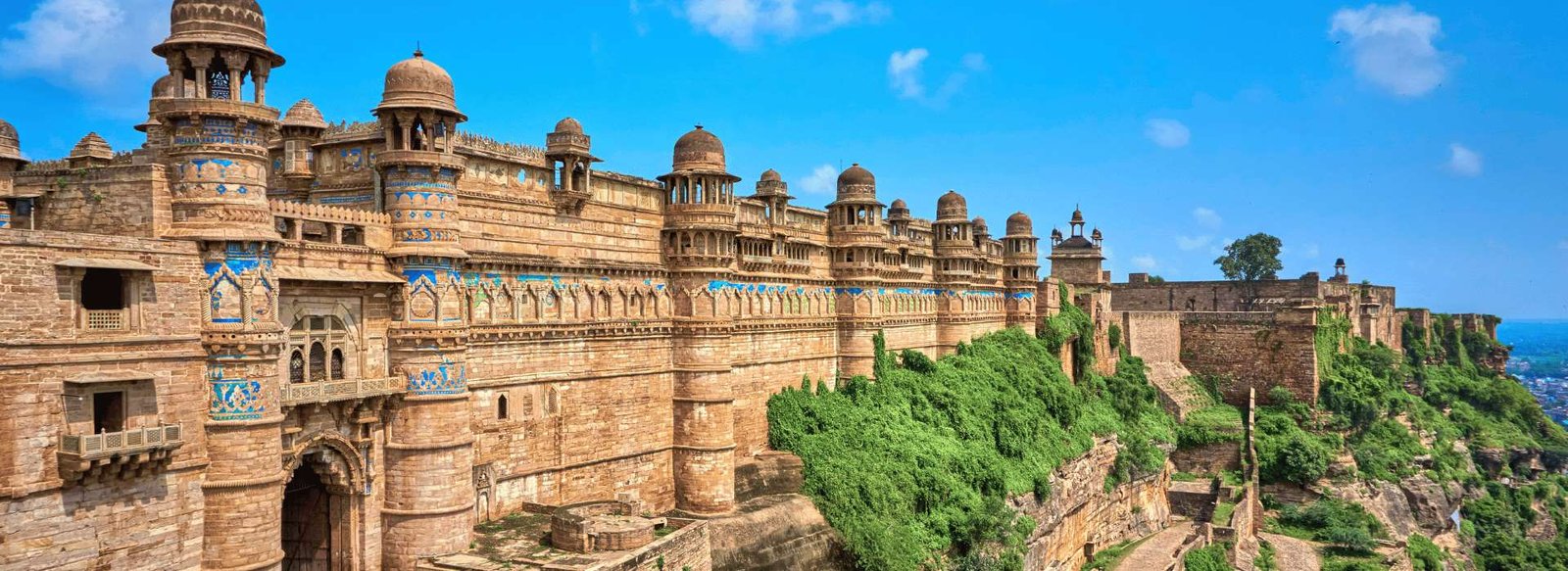
Gwalior is a historic city located in the state of Madhya Pradesh. Popular because of the hilltop fort, Gwalior is full of palaces and glorious temples giving this city a majestic charm which speaks volumes of its glorious past.
The great Indian musician Tansen was born in Gwalior, and the tomb of Tansen is also an important place here. Every year, in November/December, a four-day Tansen Music festival is celebrated in the city where various classical musicians from all over the country perform on the stage near the tomb itself. Visit the various monuments and museums, eat the local delicacies like namkeen and go boating in Tighra Dam while you are in the city.
Things to Do
Gwalior Fort
Referred to as ‘the pearl amongst fortresses in India’ by Mughal emperor Babur, the Gwalior Fort is one of the most impenetrable fortresses located in the entire northern and southern India and is a place you definitely must visit. Situated on the top of a vast rocky mountain near Gwalior in Madhya Pradesh in central India, this imposing structure dominates the entire city of Gwalior. An inseparable part of the identity and architecture of the city, evidence suggests that it has been around since 6th Century. It is also the places where the second oldest reference of the number ‘zero’ has been found in the form of a carving inside a temple on the top of the fort.
The construction of the Gwalior Fort took place in two parts, in two different time periods and thus, this architectural marvel has an intriguing history attached to it. It has passed from the possession of one dynasty to the other, multiple times. The entire fort complex is well maintained and includes temples, water tanks and palaces such as Man Mandir, the Gujari, the Jahangir, the Karan, and the Shah Jahan.
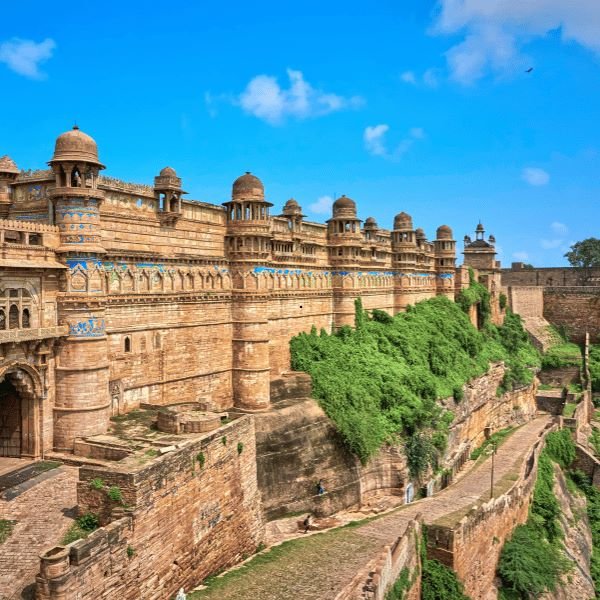
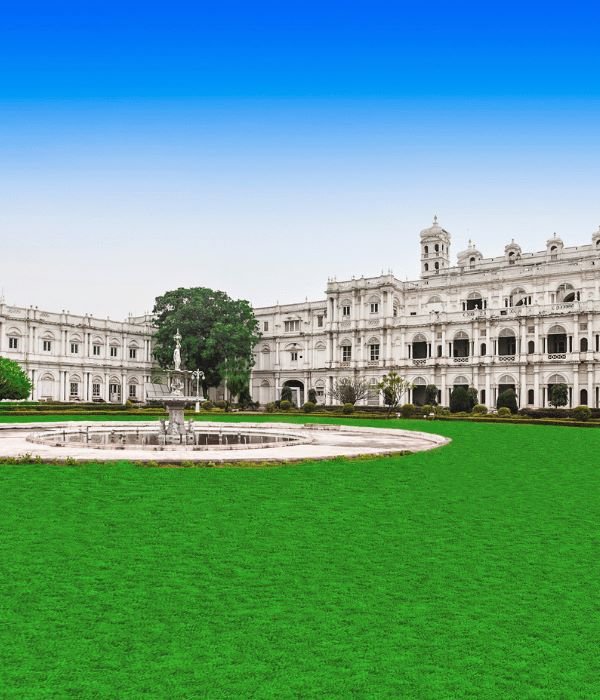
Jai Vilas Palace
The Jai Vilas Palace, also known as the Jai Vilas Mahal is situated in Gwalior, Madhya Pradesh and is a symbol of age-old Indian culture and opulence, preserved to the modern day. The Maharaja of Gwalior, Jayaji Rao Scindia, had this magnificent edifice built to ensure a grand welcome for King Edward VII, the then Prince of Wales in 1874. Today, it serves as a residence for the descendants of the royal Maratha Scindia family. The palace also serves as a museum stretched over 35 rooms, houses the Chitrangada Raje Art Gallery and a library that comprises more than 5,000 books.
Moreover, each room in the regal palace contains curios of historical importance, including a collection of swords that date back to the times of Shah Jahan and Aurangzeb, and the original Dhal (shield) that belonged to freedom fighter Rani Laxmibai. The venture cost a total of INR 1 crore, which is likely to have been quite an extravagant affair in that era.
Covering a floor area of about 75 acres, the Jai Vilas Palace has an intricately designed Durbar Hall, which houses some of the world’s most colossal chandeliers, gilt furnishings, and a large plush carpet. The centre operates with a vision of creating an international cultural centre for the study of Maratha dynasty.
Gujari Mahal (State Archaeological Museum)
Built by Man Singh in the 15th century for his favorite wife Mrignayani, Gujari Mahal is now in ruins and also an archaeological museum as it showcases various sculptures, statues and other remains dating back to 1st and 2nd century BC.
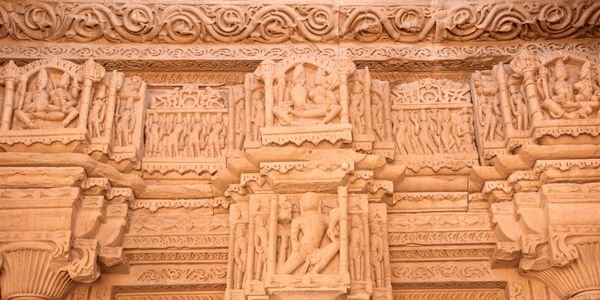
Khajuraho

Khajuraho, a UNESCO World Heritage Site located in Madhya Pradesh, is known around the world for its stunning temples adorned by erotic and sensuous carvings. A small town located in the Bundelkhand region, Khajuraho is a brilliant example of Indian architecture and its culture back in the medieval period. The architecture of these Hindu and Jain temples depict the erotic forms of love, the carvings on the walls display passion in the most sensuous yet aesthetic ways. Built between 950 to 1050 AD the sheer confrontational nature of these carvings shows a stark paradox with the conventional Indian ideals about eroticism, leaving everybody spellbound.
Art in this small town is engrained in all of its structures and are a classic example of the finesse of India’s cultural and artistic heritage. The best part about Khajuraho is that although scores of plunderers tried to destroy the whole complex, they could never succeed, even though they managed to reduce the number of temples and caves to 25 from a staggering 85 at the time it was created.
Vishwanath Temple
Dedicated to Lord Shiva, this temple is one among the western group of temples. It has a beautiful marble shivalinga as the main deity. An imposing image of Brahma is also housed in this temple. A massive sculpture of Nandi the Bull is also enshrined alongside the Shivalingam.
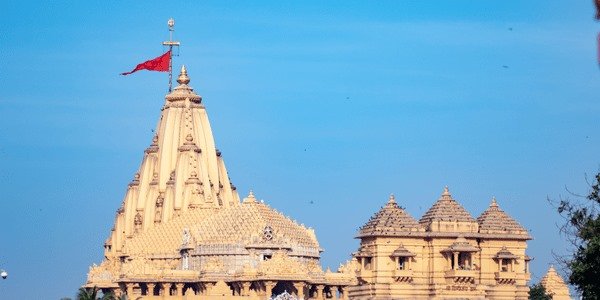
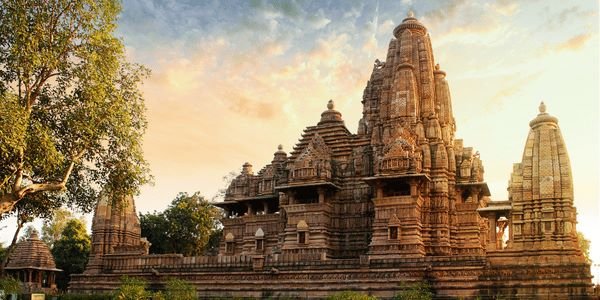
LashmanTemple
The oldest and most aesthetically pleasing temples among the Western group of Temples, the Lakshman temple is named after the ruler of that time. The trinity of Brahma, Vishnu and Shiva is depicted in the horizontal beam over the entrance of the temple.
Light and Sound Show, Khajuraho
After the visit to the temple complex is over, a light and sound show is carried out which is narrated by veteran actor Mr. Amitabh Bachhan.
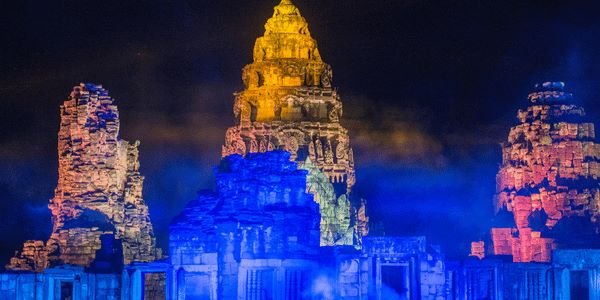
Bandhavgarh National Park

Formerly a hunting ground for the Maharajas of Rewa, the Bandhavgarh National Park is world-renowned as a tiger reserve and it is known to have the highest density of Bengal tigers in the world. The frequent sightings of royal tigers make this national park a must-visit for all wildlife enthusiasts. In 2012, around 44-49 tigers were living in the park. There are more than 22 species of mammals and 250 species of avifauna.
The park got its name from the Bandhavgarh fort situated at the height of 800 m high cliffs nearby. The fort is in ruins now, but an hour trek to the fort is worth it as it provides ample views of the surroundings. The jeep safaris are amongst the most popular activities taken by visitors.
Safaris
October to May is the ideal time for visiting the national park. Unlike any other national park, there are three types of safaris offered by the authorities – jeep, canter and elephant. Jeep and canter safaris are more popular among the tourists because it is easily available and cheaper than the elephant safari.
Types of Safaris
- Elephant Safari
- Jeep Safari
- Canter Safari
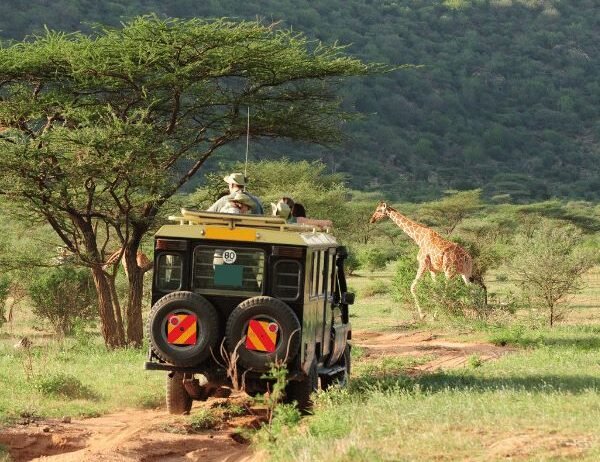
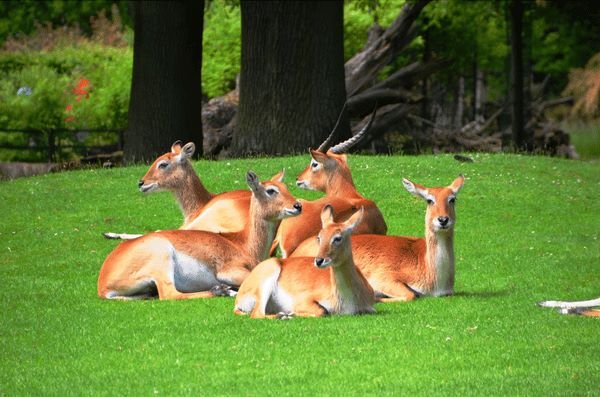
Flaura & Fauna
Among the carnivores, the fauna that can be found in the national park includes tigers, Asiatic jackals, foxes, sloth bears, ratels, grey mongoose, striped hyenas, jungle cats, and leopards are found here. Deer, monkeys, Wild boars, Nilgai, Chinkara, and Gaur, can also found here. It also hosts species of birds including Dove, Parakeet, Serpent Eagle, Black Vulture and common Peafowl. Several species of reptiles such as python, turtle, viper, and rat-snake are commonly found in the area. The flora is the typically dry and deciduous type with mostly sal and bamboo trees being dominant in the forest.
Kahna National Park

Located in a central region of Madhya Pradesh, Kanha National Park is the largest National Park in central India and has been ranked as one of the best parks in Asia. Among the 22 species of large mammals, the royal Bengal tigers are one of the major attractions. One of the best tiger reserves in India, the present-day area stretches over the 940-kilometre square which is divided into two sanctuaries: Hallon and Banjar.
The park was established in the year 1955 and has since actively contributed to the preservation of many endangered species. The National Park was taken under the Project Tiger Reserve in 1974. Abundant in flora and fauna, the Kanha National Park houses one of the rarest species of deer- the Barasingha. It is known for the unique Barasingha conversation to save the species that were once on the verge of extinction. One of the most scenic wildlife reserves in Asia today, this National Park came to be known the world over through Rudyard Kipling’s book- The Jungle Book.
Kanha National Park is famous for its wildlife safaris and attracts tourists from all over the world. Other important animals in this park are leopards, wild dogs, wild cats, foxes, sloth bears, hyenas, langurs, wild boars and jackals. Reptiles including pythons, cobras, krait and other varieties of snakes are also found in this National Park.
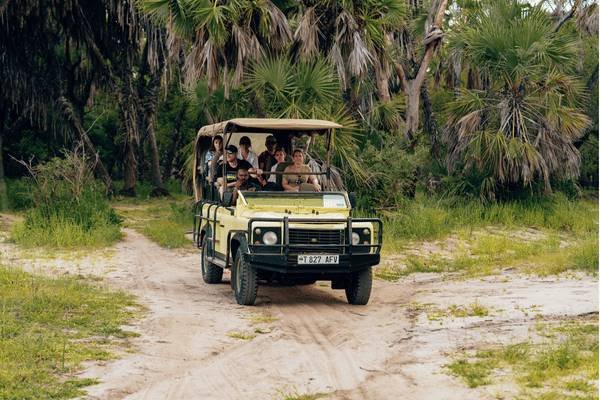
Safaris
The Jeep Safari is the best way to explore Kanha. It is very easy to find a jeep safari in Kanha, as it is one of the hotspots in India for spotting tigers. Since the costs are typically per jeep, its advisable to share your jeep in case seats are available. The safaris are allowed in two slots: morning (6 AM to 11 AM) and afternoon (3 PM to 6 PM). Morning slot typically has more chances of spotting tigers. The costs would be around INR 1000-2000 for a jeep. The evening safaris are slightly cheaper than the morning ones. Elephant safaris could be very exciting here and they are typically available in the morning slot. It might cost you around INR 300-600 per head. (rates are subject to change)
Fauna
Hundreds of acres of grassy meadows, ravines and streams, indeed a paradise for the wildlife in Kanha. Fitting under such a description of the geography, the park provides natural habitat to a huge variety of animals. Also known as the Kanha Tiger Reserve, it is a home of several tiger species including the Royal Bengal tigers which attracts a major population of wildlife enthusiasts. It also hosts a large population of leopards, jungle cats, wild dogs and jackals. Some commonly spotted mammals in the reserve are tiger, chital, sambar, barasingha, barking deer, chousingha, gaur, langur, wild pig, sloth bear, black buck, hyena, wild boar, rudd mongoose, Indian Fox, Badger, Indian Hare and Wild Dog along with several species of reptiles including Indian Monitor, Fan Throated Lizard, Indian Garden Lizard, Russell’s Viper, Python, Indian Cobra, Indian Krait and Rat Snake. The reserve has been instrumental in hosting some of the very rare and endangered species of mammals, reptiles and birds.
